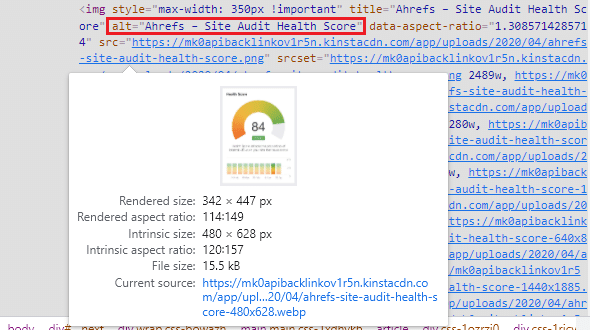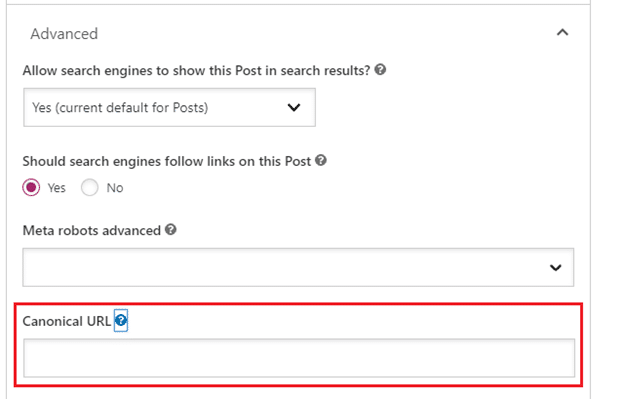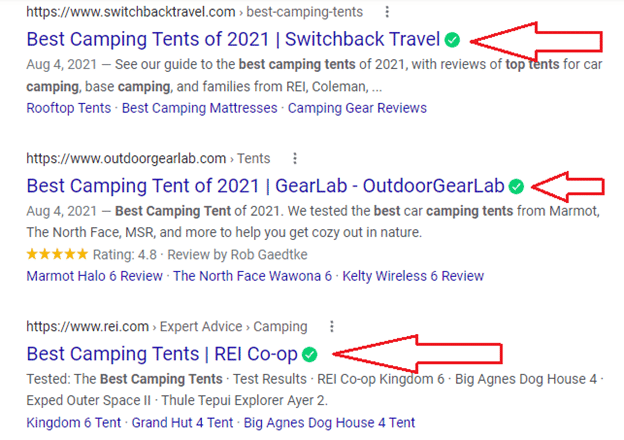After designing your website, it’s time to start looking at the more technical side of things. In this article, you’ll learn about the different types of SEO meta tags, as well as how to combine everything to boost your SEO rankings.
What are meta tags? Why are they important for SEO?

Meta tags describe a webpage to Google and your visitors. Without meta tags, Google doesn’t know what your page is about, making it near impossible to rank for your desired keywords.
By now, you’re probably thinking, “What the heck is a meta tag?”
To keep it short and simple, there are different elements that create meta tags. For example, you have title tags, meta descriptions, “robots” meta tags, alt tags, canonical tags, header tags, and more.
Some are more important than others; however, you should optimize as many as possible to get in Google’s good books.
Below we’re going to take a more in-depth look at different types of meta tags while breaking down the most common SEO myths. We will also provide examples of meta tags for SEO.
Recommended for you: How to Use SEO to Grow Company Brand Awareness?
1. Title tags
“Whether you’re creating a blog post or a product page using website builder, your title tag is one of the most important things.” – Max Yarchevsky, the CEO and founder at Boxmode.
But what is a title tag!?
A title tag, commonly known as an H1, is exactly what it sounds like – your page title. Most people don’t take the time to create a perfectly optimized title tag. Instead, they focus all their efforts on the main body of content.
When designing your title, ask yourself what the reader would want to see.
A perfect example of a well-optimized title tag is from Brian Dean at Backlinko. He created a blog post reviewing a popular SEO tool – Ahrefs. Rather than titling the page “Ahrefs Review”, he went a step further and made it more engaging for his readers by adding “Is This SEO Tool Worth the Money?”
Check it out below:

In turn, both his clickthrough and conversion rate increased. You have to remember; title tags are the first thing people see on Google. Make sure they are engaging, and the clicks will come!
2. Meta description tags
A meta description shows up underneath the title tag on Google’s SERP (Search Engine Results Page). According to Google, meta descriptions don’t affect SEO; however, there are many debates on the subject.
Here’s an example of a meta description:

While they may not help with SEO, they sure as hell improve your CTR. But how do you create a good meta description? Similar to title tags, the best approach is to make them enticing, convincing people to click through and read your article.
3. “Robots” meta tags
“Robots” meta tags are placed in the header of a page or post as HTML. Although, they can be added to all your articles.
So, what are they?
They help Google understand how to display your website in the SERPs. Two of the most common “robots” meta tags are ‘nofollow’ and ‘noindex’.
If you have a nofollow in your header, authority or ‘link juice’ won’t be passed through links on the page. This is perfect for when you are linking out to research papers and don’t want to pass authority.
On the flip side, noindex tags tell Google not to show a specific page in the search results. An example of this would be a thank you page.
So how do you ‘noindex’ or ‘nofollow’ a page?
Although it sounds confusing — it’s relatively simple! First, you’ll need to download the Yoast plugin. Once downloaded, the plugin options are displayed at the bottom of posts.
Scroll down and click on advanced, and you’ll see two options below:

4. Alt tags
Alt tags describe images for people who are visually impaired. When the visually impaired view a webpage, it’s read aloud using computer software. This helps the listener understand what the picture is about.
If you hover over a picture on a website, you can sometimes see the alt tag. You can also right-click on an image and choose ‘inspect’ to view the code.
Here’s an example:

Many people add keywords to alt tags; however, we don’t recommend it. By all means, add keywords if it makes sense. But most of the time, an alt tag’s purpose is to describe an image to the visually impaired.
5. Canonical tags
Even after working for years in SEO, important meta tags are often overlooked by specialists. Yes, we’re referring to canonical tags!
Sometimes, two similar pages try competing for the same keywords, leaving Google confused and unsure what page to rank. Canonical tags tell Google which page to rank in the SERPs.
Let’s say you have a local business with multiple pages for different towns in your state. In some cases, the town pages might outrank the state page – or vice versa. Adding a canonical tag prevents this and helps with your SEO.
But how do you add one?
Luckily, you don’t have to get technical! Instead, you can use Yoast to add a canonical tag to your posts or pages. After downloading the plugin, scroll down to the advanced section on any page (or post), and you’ll see the canonical tag section.

Add the URL of the main page you want to rank for.
6. Header tags
If the title tag is the parent, header tags are the children. Both are different but equally important. Essentially, ‘headers’ structure your page and are some of the best meta tags for SEO.
The reason? You can include keywords you want to rank for!
Google considers all keywords on a page; however, they pay more attention to header keywords. With, that being said, we’re not saying you should stuff keywords in all your headers.
You also have to consider the different types of headers. There are H1s, H2s, H3s, H4s, H5s, and H6s. H1s are the most important, whereas H6s are the least important.
You may like: 16 Best Free Website Analysis / Analytics Tools to Supercharge your SEO.
Best practices of using meta tags for SEO

There’s no point knowing the best meta tags for SEO but not using them correctly, right? So, in the sections below, we show how to use meta tags for SEO to outsmart the competition!
Use your keyword
While using keywords in some meta tags isn’t recommended, it works great for others. So which ones should you include your keywords in?
- Title tag (super important),
- Header,
- Meta description.
You can also use keywords in your alt tags; however, they need to make sense to Google and your readers. For example, there’s no point in adding your main keyword in the alt tag of a banana image unless it makes sense, right?
Keep it engaging
Most meta tags are displayed on the SERPs, so they’re great enticing people to view your page. And with that come great opportunities, don’t they?
Rather than writing mundane title tags and meta descriptions, why not turn things up a notch? Make sure they are engaging and leave your reader wanting to see more.
Before we talk about engaging meta tags, here is an example of a bad one:

While Tom’s Guide is a highly authoritative website visited by millions of people each month, this meta tag is subpar. Firstly, nothing is capitalized, so it doesn’t ‘pop’ and grab people’s attention.
Secondly, it’s not very enticing, right?
On the flip side, here is a website with a good meta description…

Do you see the difference? Highsnobiety has the same blog post; however, the title tag makes it sound 10x more enticing by capitalizing, adding numbers, and the current year.
Short and simple
It’s important to keep everything short and simple, especially your headers. There’s nothing worse than a header taking up multiple lines. Not only does it make your website look unengaging, but you also appear less trustworthy.
With that being said, there are exceptions for title tags. Because title tags are names of pages, they are bigger and sometimes take up multiple lines.
For meta descriptions, the recommended limit is 160 characters. If you exceed it by a few words, it’s not the end of the world. To make sure you’re inside the required amount of characters, you can use a free SEO tool, such as Yoast.
When it comes to alt tags, don’t describe the picture in detail. Instead, a short and simple description will do the trick!
Make it unique
Don’t copy what everybody else is doing. Instead, make your meta tags unique and stand out from the crowd.
Take a look at the websites below:

Each one reviews the best tents for camping. However, none of them have a title tag or meta description that stands out. This is because they all look the same, right?
Your job as an SEO specialist is to improve on this. Using the example above, here’s a better title tag: “5 Best Camping Tents to Escape This Summer | 2021”
See how much more engaging it sounds?
How to combine best meta tags practices to have an SEO boost for your website

An SEO promotion strategy is essential to boost your rankings and CTR and put more money in the bank! We recommend going through your website and improving your title tags and meta descriptions.
Wait a few weeks to see if there is any improvement.
If your website has lots of pages, you may need to add some canonical tags, so Google knows which content to display on the SERPs for a specific keyword.
On the flip side, if you’re reading this article before creating a brand-new website, then you’re in luck! You can implement all the techniques discussed in the above-mentioned examples, giving you a head start!
You may also like: How to Amplify Your SEO with Video Content?
Conclusion

Meta tags and SEO go together perfectly, especially when running a blog or content-based business. However, meta tags are only one piece of a large puzzle. To learn more about other elements of SEO, check out email marketing tips, which cover just about everything.





